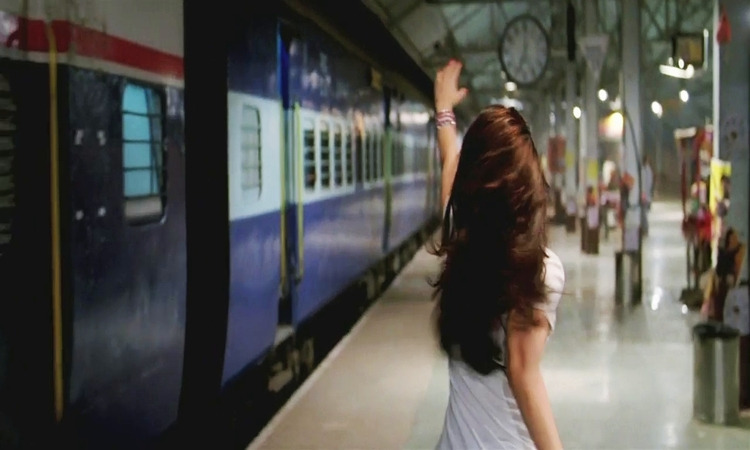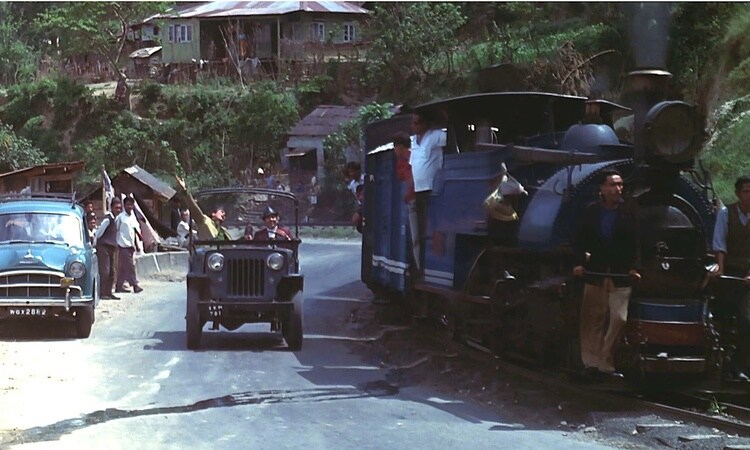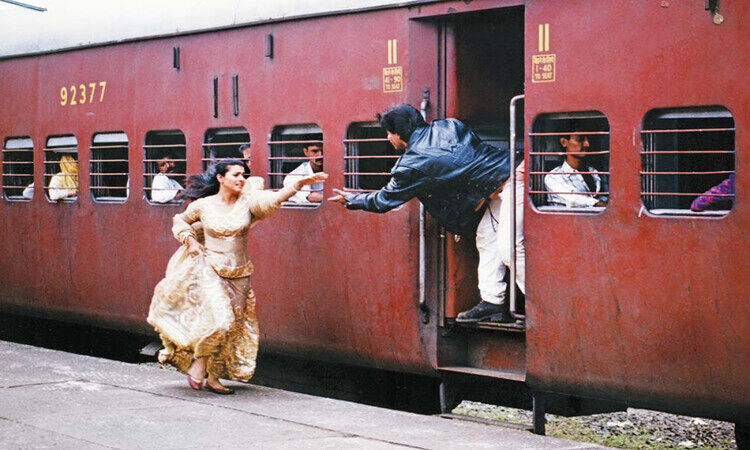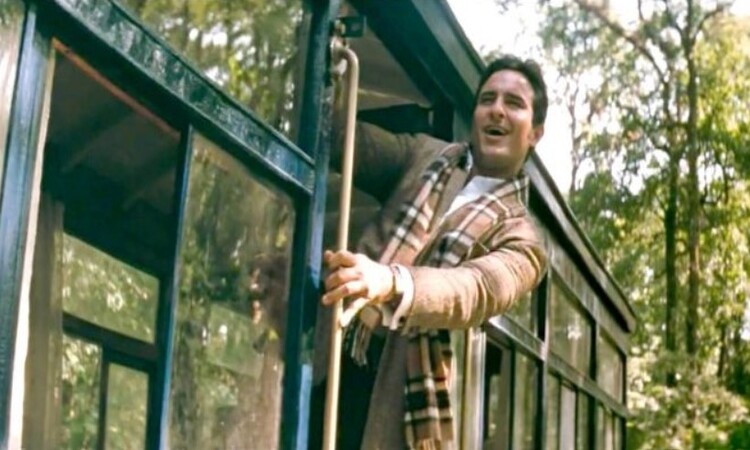The Indian Railways have consistently supported the Bollywood film industry by providing locations for shooting, ranging from action-packed scenes to romantic moments. Many movies are centred around train journeys, and as a result, Indian cinema expresses deep gratitude to the Indian Railways for this invaluable support.
Several iconic Bollywood movies and scenes are still remembered for their portrayal of trains. Likewise, many memorable dialogues have also made Indian Railways a star in the world of Bollywood.
The Indian Railways serve as a means of transportation and inspire filmmakers, lyricists, storytellers, and writers in the Bollywood industry. They take great pleasure in capturing films and songs on trains. Here is a list of popular movies and songs that have featured the Indian Railways as a backdrop.
Jab We Met
Geet, the character from the movie "Jab We Met", exudes unbridled enthusiasm and excitement, particularly for train journeys and her zest for life. The film beautifully captures her vivacity and love for herself. Geet is portrayed as a lively and carefree girl who believes that tomorrow may never come.

(Image Credit: Filmy Sasi)
The movie opens with a scene at the train station, where Geet races to catch a moving train. She has never missed a train in her life. Kareena Kapoor's brilliant performance and Imtiaz Ali's skilful storytelling are like a refreshing watermelon juice on a scorching day, leaving a lasting impact.
The character of Geet serves as a reminder whenever one plans a train journey. The film portrays the joy and romance of train travel in a captivating way. The station name Ratlam may ring a bell for many, as it is featured in the movie where the story takes an unexpected turn. Geet misses her train and blames Aditya, played by Shahid Kapoor, for her misfortune. She demands that he take her to her destination, Bhatinda, and thus begins their love journey.
Train Trivia
The 2137 Punjab Mail train shown in the movie runs from Mumbai to Ferozepur, and not Mumbai to Delhi as shown in the movie.
Chennai Express
Have you ever imagined finding the love of your life on a train? Some Bollywood movies capture this idea perfectly. Indian cinema and filmmakers often use trains and rail journeys as plot devices for romantic movies, with Indian Railways playing a significant role.

(Image Credit: LBB)
One outstanding example is the movie Chennai Express, where the character Rahul, played by the King of romance Shahrukh Khan, and the talented actress Deepika Padukone, meet during a train journey. The film beautifully showcases the beauty and culture of Southern India, skillfully directed by action Director Rohit Shetty.
The picturesque locations, especially the Dudhsagar Falls, add to the movie’s charm. The film’s storyline inspires you to plan a train journey to the South to witness these stunning locations from the train window.
Train Trivia
The Dudhsagar Falls scene was shot on the Belagavi-Vasco Da Gama railway route.
Aradhana
The movie, featuring Rajesh Khanna and Sharmila Tagore, was released in 1969. One of the most popular songs in Bollywood history, "Mere Sapno-ki-Rani Kab Aayegi Tu," was part of this film. The movie was shot amidst the natural beauty of Shimla, the summer capital of India, covered in snow.

(Image Credit: Google Arts & Culture)
The iconic Darjeeling Himalayan toy train was featured in “Sapno-ki-Rani”, where Rajesh Khanna tries to impress Sharmila Tagore, who plays his dream girl, by matching the speed of his jeep with the toy train.
The song showcases the timeless scenic beauty of Shimla and the Darjeeling Himalayas, which are recognized as UNESCO Heritage Sites.
Train Trivia
The iconic “Sapno-ki-Rani” song sequence is one of the earliest instances of the use of synchronization in Indian Cinema. Only Rajesh Khanna and Sujith Kumar were actually present on location in the scene. Sharmila Tagore was not able on the day of the shoot due to a prior engagement on a film with Satyajit Ray.
So, her scenes were shot separately in a studio and then later on synchronized with the shots of the two actors.
Dilwale Dulhania Le Jayenge
In the climactic scene of the film, Simran (played by Kajol) is shown running to catch up to the train on which Raj is travelling. However, the intense heat posed a big challenge to the cast while shooting the scene, with each new take requiring as long as 20 minutes of waiting while the train returned.

(Image Credit: Outlook India)
During Yash Chopra's reign in the film industry, when he was known for delivering heartwarming romantic stories to captivate audiences, the release of the film "Dilwale Dulhaniya" became a milestone.
The final scene, where Amresh Puri, portraying Kajol's father, allows her to hold Shahrukh Khan's hand, adds a poignant and romantic touch to the movie. The dialogue "Ja Simran Ja, Jee Le Apni Zindagi" has become memorable, symbolizing the liberation to live life on one's own terms.
The essence of the scene is rooted in the importance of respecting an individual's choice. Despite Kajol's father's initial strictness and disapproval of her love affair, he eventually realises the depth of his daughter's true love and sets her free to choose her path.
The director could have never anticipated that this climactic scene would leave an indelible mark, serving as a timeless example of love and freedom in Indian cinema.
Train Trivia
The train scene in the film was shot at Apta Railway Sation which is situated in Maharashtra’s Raigad district on the Panvel-Roha route.
Dil Se
Almost everyone has a secret desire to dance on top of a moving train at least once in their lifetime, and the song "Chaiiya Chaiiya" from the movie "Dil Se" captures this sense of adventure and excitement. The stunning Malaika Arora, known as the glamour queen of the film industry, made her remarkable debut alongside Bollywood's Badshah, Shahrukh Khan, in this song.

(Image Credit: YouTube)
The music video was filmed on the Ooty train, powered by the X-Class Steam Locomotive of the Nilgiri Mountain Railway in the scenic Tamil Nadu region of southern India.
Shahrukh Khan danced with model/actress Malaika Arora and other dancers, while renowned director Mani Ratnam and acclaimed cinematographer Santosh Sivan captured the footage. The choreography for the song was completed in just four and a half days by Farah Khan, without the use of major back projections or post-production special effects.
One of the most enchanting aspects of the music video is how the train whistle harmonizes with the song, while the breathtaking natural surroundings add a fresh and invigorating flavour to the scenes. "Dil Se" was a popular film directed by Mani Ratnam and was released in 1998.
Train Trivia
The film crew of Dil Se shot the “Chaiiya Chaiiya” song sequence, which took four days to complete, on an alternate train track with an Ooty train.
Parineeta
Parineeta is a beloved Bollywood film that has won several awards. The song "Kasto Maja hai Railaiyama" is a standout moment in the movie. It was filmed in the scenic Darjeeling Himalayan Railways, with some scenes shot at Apta Railway Station.

(Image Credit: Conversations Over Chai)
The train journey scenes are breathtaking as the train passes through the majestic Himalayan landscapes, and Saif Ali Khan is seen happily interacting with cheerful children on board. He sings the song during the ride, imagining his love interest, Parineeta, portrayed by Vidya Balan.
In addition to Parineeta, there are many other films in Bollywood that feature train journeys as part of their stories. Railways have always been a supportive backdrop for Indian cinema and have played a prominent role in many movies.
Train Trivia
The character in the film played by Saif Ali Khan rides on the same toy train as the character in the song “Sapno-Ki-Rani” from Aradhana who is played by the actor’s mother.
Conclusion
Bollywood has long had a love affair with trains with many of its films having some of their best scenes shot on Indian trains. From comical scenes to heartwarming romances, trains have been an ideal backdrop for memorable moments in Bollywood films.
Besides adding visual appeal to movies, these scenes also evoke a sense of cultural significance and nostalgia. This is because trains have been an integral part of life in India since the 19th century.
Indian filmmakers have used trains as a unique setting to showcase their talent and creativity. And while doing so, they also end up conveying a range of emotions and creating memorable cinematic experiences for audiences.

